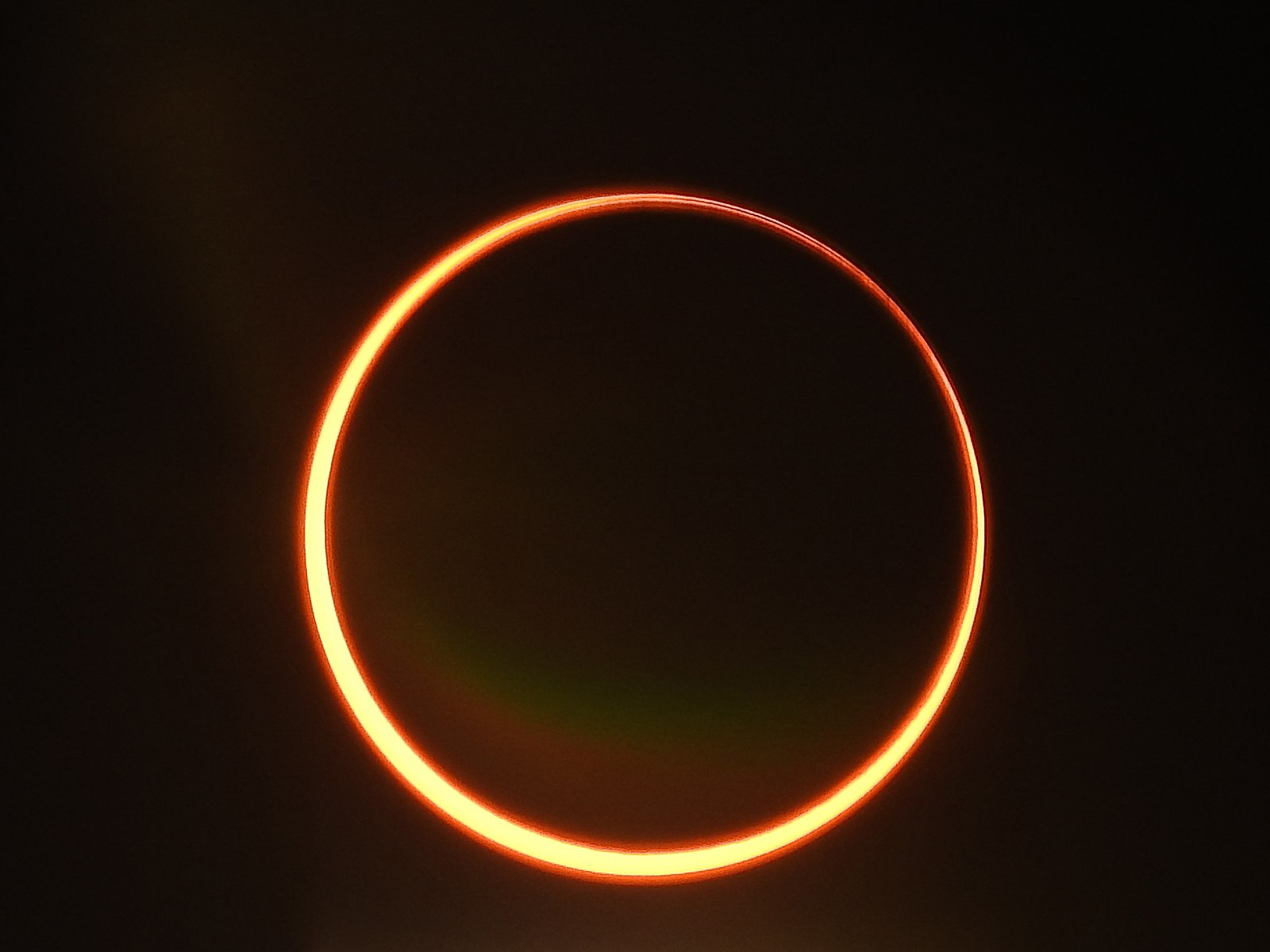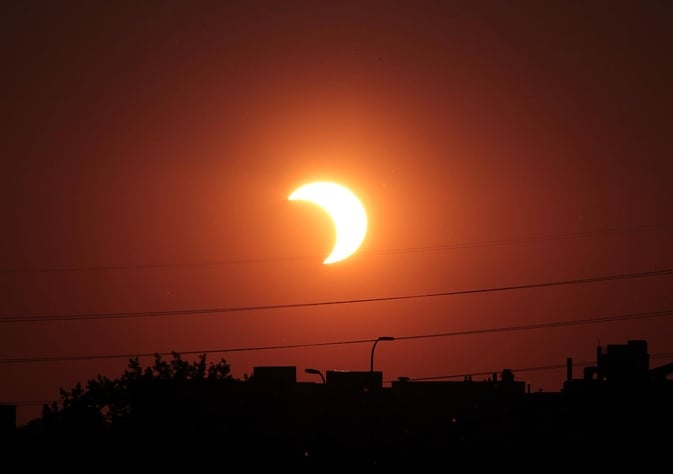
On the heels of the spectacular May 26, 2021, total lunar eclipse comes another celestial spectacle. On June 10, 2021, some lucky stargazers will witness this year's first of two solar eclipses. Since it is an annular, not a total, eclipse, the Sun's edges will be visible around the Moon, transforming the star into a stunning "ring of fire."
“Annular eclipses are similar to total eclipses in that the Moon, Earth, and Sun are aligned so that the moon moves directly in front of the Sun as viewed from Earth,” said Alex Young, associate director at NASA’s Goddard Space Flight Center. “But a total eclipse does not happen, that is the Moon does not completely block out the visible disk of the Sun because the Moon is farther away and so its apparent size in the sky is (slightly) smaller than the Sun. This means that a tiny ring of the annulus of the solar disk is visible around the Moon.”

The annular eclipse will begin at sunrise in Ontario, Canada, travel across the North Pole, and end in Siberia, Russia. While the eclipse will last about 100 minutes from start to finish, the"ring of fire" will only be visible for about 3 minutes 51 seconds along any point in its path.
“A bucket-list item for many eclipse chasers is to witness a sunrise or sunset annular solar eclipse at maximum eclipse,” Michael Zeiler of GreatAmericanEclipse.com told Forbes. “This unearthly sight will be remarkable because the Sun will appear as a thin squished ring, heavily refracted by the dense atmospheric column at the horizon.”

An equally stunning partial eclipse — which will cause the Sun to appear like someone has bitten off a large chunk of it — will be visible from Europe, Asia, and parts of North America. In the US, the partial eclipse can be observed from the South Carolina-Georgia border northwards up the Atlantic coast at, or slightly after, sunrise. Some of the best views will be reserved for the residents of Philadelphia, New York, and Washington, DC.
If you are among the fortunate ones in the eclipse's path, experts recommend seeking out an unobstructed viewing area — either on a beach or atop a high building. More importantly, use solar-viewing or eclipse glasses to prevent eye damage. You can also look at the eclipse indirectly using a homemade pinhole camera, like the one demonstrated in the video above. Those not in the eclipse's path can participate in the fun through one of the many websites that will be live-streaming the event. In summary, you can watch this remarkable event regardless of where you live!
Resources: earthsky.org, space.com, Forbes.com
